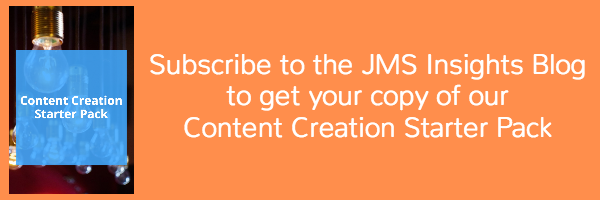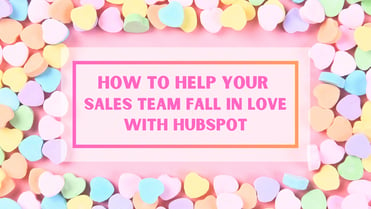
With HubSpot having just announced the new Content Optimization System, many marketers are now thinking about how they can more effectively use their website in their sales process. While previously your homepage served up the same information to people regardless of their status in the sales cycle, the COS opens up the ability to add context to it - changing the messaging based on who’s looking. Finally, you don’t have to have universal messaging, you can adjust the message based on where people are in the sales cycle.
Why the COS?
The announcement of the new COS brings together the same content editing backend that was launched with HubSpot3 for landing pages and email and unifies it across all aspects of the HubSpot product. Now you can use the same content editing backend for landing pages, email, site pages and your blog. Furthermore, there are now expanded features for the blog (such as easier to manage subscriptions, integrated Google+ authorship, Twitter card integrations, and others).
For marketers trying to take advantage of the growing amount of users viewing your site on mobile devices, there’s good news. The new COS will be fully responsive. That means that out of the box, any default theme or custom site that you develop will fully adapt to different screen sizes, be it mobile, tablets, or desktops. Given the number of people who now split their website viewing across multiple screens, this is incredibly important.
HubSpot has long had the ability to use it’s platform with your own website if you’re a professional or enterprise user, and that remains the case. But having the whole website hosted with HubSpot now has new advantages that will make many companies reconsider. First there are the website fundamentals that you gain from being on the HubSpot hosting. Not only do you benefit from really great uptimes (between 99.95 and 100%), you also can have your whole site take advantage of their content distribution network. This helps a lot with image loading times and will make your whole site seem speedier. This is really important as site load times are factored into Google’s ranking algorithm.
The Killer Feature
In addition to the hosting, there’s one big new feature that will have a lot of marketing teams considering switching: smart content. Smart content is the natural extension of what HubSpot had previously done with smart CTAs, and represents what’s possible when you have a truly integrated marketing platform. Now if you’re on the new COS, you’ll be able to change whole content areas based on lifecycle stages or smart lists.
This ability opens up many exciting options. Now you can have the website display different information (or display information differently) based on where someone is in the sales process. Imagine having a website that adjusts based on where a person is in the sales process. Have an introductory message for when a person first visits the site. Highlight case studies for prospects. Show new product information for existing customers. There are lots of tantalizing possibilities.
Our Experience
We’ve been testing the COS for several months now and have found it to be very competitive to many other common CMS’s, and that the additional abilities of having it fully integrated with the HubSpot database to be fully worth it. In fact you may have noticed our website has a different look as of late. We’ve recently switched from our old Wordpress site over to the new COS. While there’s differences with any website platform, being able to pull in all of your marketing information into one system is hugely beneficial. While the COS has some nuances (more on making the switch to come), we’ve been able to move our website over to the new system easily, and have completely revamped our site in the process.
The Future of HubSpot
As marketing continues to shift towards personalization and context, HubSpot has staked it’s claim as an enterprise inbound tool by continuing along this curve. The new COS fully establishes the website as the primary sales tool from where all sales conversations begin. Which brings us to a larger topic coming out of INBOUND - the idea that inbound marketing is not enough.
This was a major topic of discussion at the conference, and represents not only a new way forward for the company but a new way forward for human-facing operations. HubSpot also announced the Social Inbox, which is a tool meant to be used across marketing, sales and customer service, and Signals, a tool that provides many of the analytics of email marketing to individuals on a personal level (which makes it ideal for sales). HubSpot has realized that the best inbound marketing process in the world is immaterial if the sales or services departments are terrible.
Today launched HubSpot’s transition to a full inbound company, not just a marketing company. By launching social inbox, the COS and signals, you can see them beginning to reach out into the customer service and sales direction. Ultimately, you see the importance of the entire human experience, moving from stranger, visitor, lead, customers, to evangelist. Customers are now over half way through the sales process before they ever talk to a person, so the importance of marketing is more evident than ever.
Customer satisfaction alone is no longer enough; customer delight is the new goal. HubSpot is working to make tools to enable this, but it still takes a customer-focused company to truly make it work. Companies that recognize the importance of human interactions and customer experience have huge opportunities ahead of them, and are headed for huge successes.






